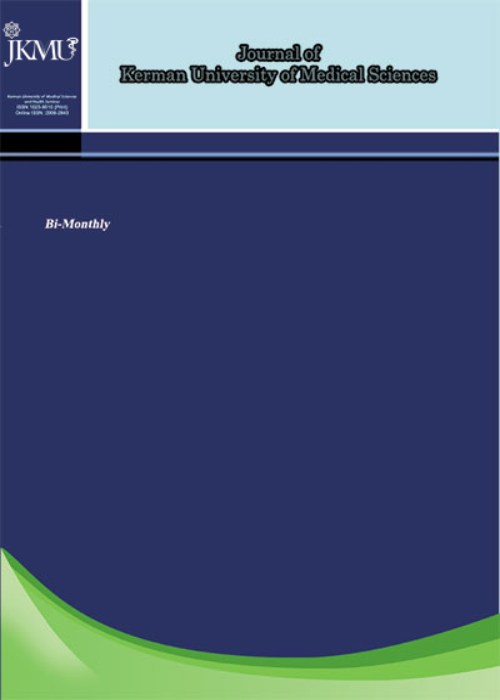The Ability of Ultrasonic Characterization to Extract the Dose Distribution of MAGIC-f Polymer Gel
Author(s):
Abstract:
Background and Aims
Today, different imaging techniques have been studied in the reading of radiation-sensitive polymer gels dosage. Due to limitations of imaging techniques such as magnetic resonance imaging (MRI) and computed tomography (CT), ultrasound techniques are proposed for dose-dependent parameter extraction. In this study, using MAGIC-f (methacrylic and ascorbic acid in gelatin initiated by copper with added formaldehyde) polymer gel and megavoltage radiation energy, the dose-dependent parameters of speed of sound and broadband ultrasonic attenuation (BUA) were evaluated.Methods
MAGIC-f polymer gel was irradiated with 1.25 MeV of Cobalt-60 and received a uniform dose in the range of 0 to 60 Gy in 2 Gy steps (2% accuracy). After calibration of ultrasound system with 500 kHz frequency, the parameters of speed of sound and BUA coefficient of exposed polymer gel samples were measured. Based on the dose-response curve, the ability of the ultrasound parameters in reading the absorbed dose was investigated. To evaluate the reasonable time interval with the most sensitive reading of the ultrasound method, samples were studied 3, 24, 36, and 48 hours after irradiation. To study the temperature readings, the gel samples irradiated at 5, 15, and 25 °C were studied.Results
The relationship of variation of speed of sound and attenuation coefficient and quality index (QI) with absorbed dose 3, 24, 36, and 48 hours after irradiation of gels are shown with a fourth-order polynomial fit. The results show that ultrasonic parameters have higher sensitivity 24 hours after irradiation. The sensitivity of dose-speed of sound and attenuation curve were 50 cm/s and 0.06 dB/MHz/Gy based on each Gy in the linear range of 4-44 Gy. Ultrasonic parameters were measured in the gel samples at 5, 15, and 25? C after 0-60 Gy irradiation in 2 Gy steps to determine the sensitivity of the ultrasonic properties to temperature. The measurements show that readings at 25 °C have a higher sensitivity than that at 5 and 15 °C. Thus, with an increase of 20 °C, the speed of sound increased 28 and 66 m/s before irradiation and with 60 Gy absorbed dose, respectively. Moreover, the attenuation coefficient decreased 2.50 dB/MHz before irradiation and increased 2.70 dB/MHz with 60 Gy absorbed dose. Conclusion
Acoustic properties of MAGIC-f gel, determined by measurements of speed of sound and ultrasonic broadband attenuation, indicate the ability of this technique in reading of absorbed dose. Maximum sensitivity of reading time and temperature of MAGIC-f gel were 24 hours after irradiation and 25 °C, respectively.Keywords:
Language:
Persian
Published:
Journal of Kerman University of Medical Sciences, Volume:22 Issue: 4, 2015
Page:
394
magiran.com/p1441301
دانلود و مطالعه متن این مقاله با یکی از روشهای زیر امکان پذیر است:
اشتراک شخصی
با عضویت و پرداخت آنلاین حق اشتراک یکساله به مبلغ 1,390,000ريال میتوانید 70 عنوان مطلب دانلود کنید!
اشتراک سازمانی
به کتابخانه دانشگاه یا محل کار خود پیشنهاد کنید تا اشتراک سازمانی این پایگاه را برای دسترسی نامحدود همه کاربران به متن مطالب تهیه نمایند!
توجه!
- حق عضویت دریافتی صرف حمایت از نشریات عضو و نگهداری، تکمیل و توسعه مگیران میشود.
- پرداخت حق اشتراک و دانلود مقالات اجازه بازنشر آن در سایر رسانههای چاپی و دیجیتال را به کاربر نمیدهد.
In order to view content subscription is required
Personal subscription
Subscribe magiran.com for 70 € euros via PayPal and download 70 articles during a year.
Organization subscription
Please contact us to subscribe your university or library for unlimited access!


